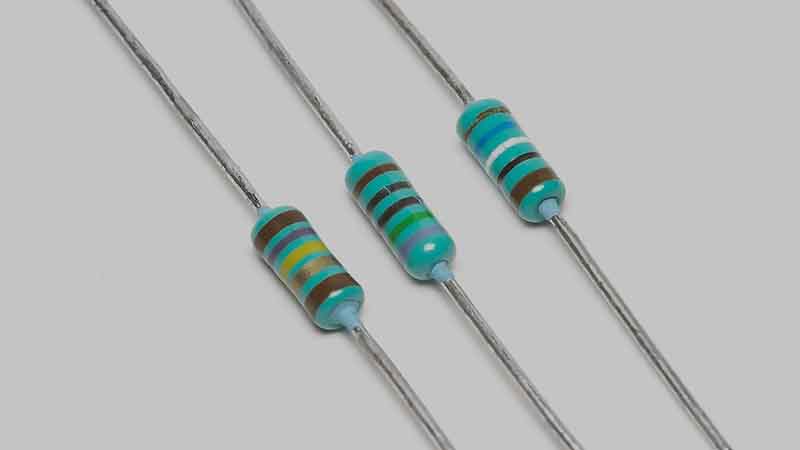An electric circuit has an electrical current flowing through it. A resistor is a component within an electronic device that blocks or limits the flow of the electrical current going through its electric circuit. When the energy of the electrical current goes through the resistor component, it gets converted into light or heat. This energy actually comes from the electrons flowing through the resistor.
To give you an example, think about the resistor inside of a light bulb. When you activate a light bulb, its electrons (energy) flow through the resistor and get converted into light. That is how that bright illuminating light is able to form inside the light bulb.
Materials
All resistors require a non-conductive casing material with resistance material inside it. Plastic is the most common non-conductive casing material, while carbon is the most common resistance material. The connecting wire might appear on either side of the resistor.
As a result, carbon resistors are the most common type of resistors seen in today’s electronic devices and components. In the old days, resistors had a weaker conducting metal which was only good at stopping the electrical flow.
Resistor Combinations
The resistors inside of an electric circuit are connected to each other either one after another or over one another. The former is a series connection and the latter is a parallel connection.
Of course, there are several different types of resistors available. The difference between each resistor pertains to their rating and value. An electrician understands the value of the various resistors by looking at the series of color bands on them. These color bands allow an electrician to immediately know the amount of power that can be tolerated by the resistors. If the resistors were to receive more power than what they can tolerate, then it would cause them to break.
Electricians work to slow down the electrical flow that goes through the resistors by using this color band information as a guide. If they want to create higher resistance, then two resistors will have a series connection. But if you want to lower the resistance and stop the resistor from maximizing its capacity, then you’d want the two resistors to have a parallel connection instead.
Read also:
- 7 Different Types of Resistors and Color Code Explanation
- The Different between OTL and OCL Power Amplifiers
- 7 Different Types of Amplifiers with their Functions
Inside an Electronic Component
Resistors have several different uses. When electronic devices and gadgets are manufactured, there are a lot of electric circuits in them. Resistors are needed for these circuits in order to prevent the electronic components from getting damaged. Each circuit can only tolerate a certain amount of electric current. A resistor limits the current flow in order to keep the circuit functional and safe.
For example, if you have an electric current that moves very quickly through a circuit, then you would need to use more resistors to slow down the current. After all, more resistors mean more resistance. The more resistors you add to a circuit, then slower its electric current will be. And if different areas of the circuit require voltage, the resistors have the ability to split the voltage between these areas as well.




